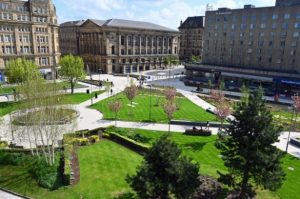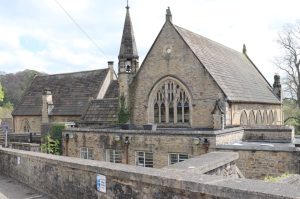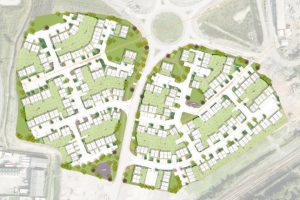HS2 route to Yorkshire announced

DETAILS of the next phase of the HS2 high-speed rail network – which will slash journey times from Yorkshire to the Midlands and London – have been unveiled by the Government today.
The preferred route of the 211-mile phase two running north from Birmingham will have five stops at: Manchester; Manchester Airport; Toton in the East Midlands; Sheffield; and Leeds.
It will reduce journey times from Birmingham to Leeds from two hours to 57 minutes, Birmingham to Sheffield to 38 minutes and from Sheffield to Leeds to 20 minutes.
While the Manchester to London journey time will be cut by an hour to one hour and eight minutes, the Leeds to London journey time is likely to be around one hour and 22 minutes compared to the current time of about two hours and 15 minutes and Sheffield to London will be one hour 19 minutes.
New stations will be built at New Lane in the South Bank area of Leeds city centre, connected to the current main station by a walkway while HS2 will stop in Sheffield at a dedicated new station at Meadowhall, outside the city centre.
In Manchester the terminal will be located in the city centre alongside the existing station at Piccadilly and it will also stop at Manchester Airport, where a new interchange station alongside the M56, between Warburton Green and Davenport Green, will be built.
The other stop will be in the East Midlands, at Toton between Nottingham and Derby, and one mile off the M1.
A final route for phase two is expected to be chosen by the end of 2014 and will be built by 2032, connecting to the £32bn line between London and Birmingham which will open in 2026.
The project is predicted to created 100,000 jobs and will be integrated with the existing national railway network, meaning cities and towns beyond the high speed track up to Scotland – including Liverpool, Glasgow, Edinburgh, Newcastle, York, Preston, Warrington, Lancaster, Carlisle, Durham and Darlington – will also benefit from new connections and substantial time savings due to new trains able to use both high speed and conventional railway lines.
On HS2, travelling at speeds up to 250mph, passengers will be able to commute from Birmingham to London in 49 minutes, reducing the journey time from the current one hour and 24 minutes.
Leeds City Council Leader Councillor Keith Wakefield said: “We have lobbied long and hard for a high-speed rail link to Leeds and this is excellent news. It will strengthen Leeds’ position as the Northern transport hub and unlock major investment, jobs opportunities and connectivity to the rest of the country.
“The proposed station offers a unique opportunity to create a striking new gateway into the city centre, but will only work if the interchange links directly into Leeds Station and comes with a significant government package of investment in its infrastructure, road and rail links to the rest of the city region area.
“HS2 could be pivotal in driving our plans to regenerate the city centre’s South Bank but the government needs to ensure any disruption to communities is minimised during the construction of both the line and the station.”
Prime Minister David Cameron said: “Linking communities and businesses across the country and shrinking the distances between our greatest cities, high speed rail is an engine for growth that will help to drive regional regeneration and invigorate our regional economies. It is vital that we get on board the high-speed revolution.”
“We are in a global race and this government’s decision to make high speed rail a reality is another example of the action we taking to equip Britain to compete and thrive in that race. High speed rail is a catalyst that will help to secure economic prosperity across Britain, rebalance our economy and support tens of thousands of jobs.”
Transport Secretary Patrick McLoughlin said: “The Olympics showed us that Britain has the confidence to seize opportunities today in order to secure our success tomorrow and HS2 is no different. It is about an investment in infrastructure that will deliver a priceless dividend: 351 miles of new railways helping people to jobs and goods to market.”







